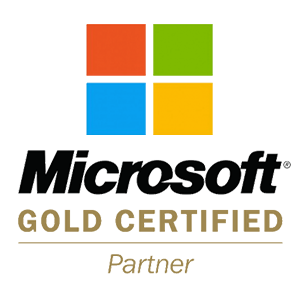Implementing a new ERP solution is a decision that most companies choose to avoid until it becomes absolutely necessary. This is understandable when you take into consideration the sizable capital investment and time commitment that goes along with it. Not to mention the potential risk that companies are exposed to (unexpected delays & costs) during the implementation process.
However, ERP software eventually becomes obsolete, and running outdated ERP software can end up costing your company more money in the long run, than it would to just implement a new ERP solution. That’s just the hard costs. The ERP system is the informational brain of your company. The soft costs of having an outdated ERP system might be business decisions that are made based upon outdated or erroneous information, resulting in less profitability than expected.
With that in mind, below are 15 signs that indicate it might be time for you to replace your outdated ERP solution:
1.) If you’re still using a “green-screen” user interface
Most companies have moved away from the “green screen” user interface, but there are still companies that are reluctant to make a change. If you are one of the few still using an outdated ERP solution with a “green screen” interface, it’s time to upgrade your solution. Don’t get stuck in the past just because “it works well enough for now.” Think about the future and whether or not that solution is going to continue to scale with your growing business and if, in fact, your system might be impeding the growth of your business
2.) If the majority of your reporting is coming via Excel
Technological advancements, in terms of ERP reporting capabilities, will only continue to get more and more powerful. Take full advantage of the real-time reporting tools that are available on the market. These tools will ensure that your company has the most up-to-date information when you need it most, while also reducing redundancy and freeing up your IT resources to work on more value-added tasks.
3.) If your ERP solution is heavily customized
There is generally always going to be some level of customization when implementing a new ERP solution. However, there is such a thing as too much customization – Especially when there are new ERP solutions available that can meet most of your needs out of the box.
Looking at newer ERP solutions should give your company the opportunity to analyze your current business practices, to see if you’re adhering to industry best practices. This should eliminate the need for most customizations when the time comes to implement a new solution.
4.) If you have more integrations than users
Don’t get me wrong, integrations can be great thing! They can help extend the capabilities of your ERP solution, and fill in gaps that your current ERP solution may not offer. But, when you have too many integrations it can lead to unwanted complexity, higher maintenance costs, and difficulty upgrading to the latest solution version. A new system could eliminate some of these integrations with base functionality out of the box and that is worth evaluating.
5.) If your ERP solution is no longer supported (maintenance, patches, etc…)
This one may seem obvious, but I know there are still companies running on ERP solutions that are no longer being supported or no longer being invested in. If you’re one these companies, it’s time to make a change. Look for a new solution that’s heavily investing in R&D, and also releasing patches and updates. You want an ERP provider that’s dedicated to the longevity of their product.
6.) If your ERP maintenance fees are becoming cost-prohibitive
Many of the larger ERP providers will increase maintenance costs, annually, by as much as 6-7%. This adds up over the years and can eat up a large portion of your annual IT budget. If your company were to add up those maintenance cost increases, over a 7-10 year timeframe, it will often justify the implementation of a new ERP solution with lower annual maintenance fees, effectively lowering the annual IT cost run rate.
7.) If your ERP solution is not providing the KPI’s you need to make more informed business decisions
If you implemented your solution 5-7 years ago (or more), it’s likely that the information you are looking to get out of your ERP solution is not easy to find, or not available. Not having this information readily available for your executive team can make it a lot harder for your company to make solid business decisions based upon real data.
8.) If your legacy ERP processes don’t match up with your current business processes
Let’s face it, your company’s business processes have changed significantly over the past few years (at least I would hope so). So the question becomes: did your ERP processes change along with your newly implemented business processes? Sure, maybe you customized / reconfigured a few aspects here and there, but, does your current ERP solution align with the way your company does business today? If not, is it flexible enough to change with you in the future?
9.) If your IT infrastructure is “sun-setting”
This should not be a surprise, but having an outdated infrastructure can end up costing your company more money in the long-run. Finding IT resources that are knowledgeable about your infrastructure will become much harder to find as your system ages. If you are able to find these resources, they will likely charge a premium price for their services. Having an outdated infrastructure can also make integrations and customizations more difficult and costly.
10.) If you have outsourced solutions that a new ERP solution would allow you to bring back in-house
Bringing your outsourced software solution(s), in-house, will give your company more control of your data and can also be a lot more cost-effective. These applications might include payroll and HR. Outsourced HCM often looks good on paper, but once you get dinged for additional costs on every ‘custom’ report and tax interface, the total cost of the solution may not be as attractive as you expected. If you control the database and your infrastructure is updated, your internal developers can write custom reports as needed, without an ongoing add-on cost.
11.) If your ERP solution does not allow for electronic payments out of the box
If your company is still cutting physical checks to make payments and cannot accept electronic payment receipts, then it’s time to consider implementing an ERP solution that supports electronic payment functionality. It will make payment processing a lot easier for your end-users, and also allow your company to leverage ACH or direct debit functionality. Most importantly, electronic payments are more secure and eliminate the float on receipts, which can make a huge difference in your cash flow.
12.) If your ERP solution does not support sales and use tax compliance
Implementing an ERP solution that supports sales and use tax compliance is essential functionality, not optional. Your company could potentially get hit with penalties for not complying, which, in and of itself, could justify the cost of a new ERP system.
13.) If your approval process in controlled by paper, not electronics
Processes controlled by paper are more easily falsified and prone to inefficiency. Internal compliance teams love the traceability of electronic signatures and approvals. Newer ERP systems offer workflow functionality for common approval functions out of the box.
14.) If your company’s financial close process is impeding timely business decisions
If it takes longer than a week to give critical feedback about a period’s financial performance, your company runs the risk of repeating the same mistakes in the following period. Having short month-end close processes allows for critical feedback to be communicated to the company. Timely reporting should be a business priority and if your ERP system gets in the way, it’s time for a change.
15.) If you have not upgraded in 5-7 years
Some ERP solutions, if implemented correctly and properly maintained, can last much longer than 5-7 years. But in most cases, solutions that are older than 7 years, don’t have the functionality and capabilities necessary to scale with your business. You could be missing out on business process functionality, based on industry trends and best practices, which have been implemented into the latest version of your preferred ERP software solution.
Also worth noting, you should annually monitor the ROI of your ERP investment to ensure that your solution is meeting your desired goals and objectives, both financially and operationally speaking. For a more in-depth discussion regarding the ROI calculation of your ERP investment, please refer to our recent blog post ‘Calculating the Post-Deployment ROI of your ERP Investment: 3 Step Process’.
if your company is looking for guidance during the evaluation process of your outdated ERP solution, feel free to contact us at info@itksolutionsgroup.com. And to stay In The Know, connect with us via social media and check out more posts on our blog!





